The 5 Best Ways to Uninstall Software on Ubuntu
Hundreds of packages can be installed on the Ubuntu machine using different approaches. Most of the packages are available in the default repository of Ubuntu; others can be installed by downloading from different Linux application stores, including Flatpak, Snapcraft, and .deb files.
This blog will demonstrate five ways the packages can be uninstalled on Ubuntu. The post’s content is as follows:
Let’s explore the first method.
Mục lục bài viết
Method 1: Using the apt Package Manager
The apt package manager is the default package manager in the Debian-based Linux distributions, including Ubuntu, to manage the packages, and it can install, update, and uninstall packages from Ubuntu. We will use the apt package manager to uninstall software on Ubuntu by following the general syntax:
$ sudo apt [options] [package name]
Top 10 Linux Distros
Please enable JavaScript
The options which can be used with the apt package manager to uninstall the software are:
removeIt will remove the package from Ubuntu without deleting the configuration files of the packageauto-removeRemoves the packages and all the dependencies.purgeRemoves the specific package and its config files.-purge autoremovePackage, configuration files, and dependencies.
For understanding the working of the apt package manager, we will delete the package of vlc with all its configuration files using the command:
$ sudo apt purge vlc -y
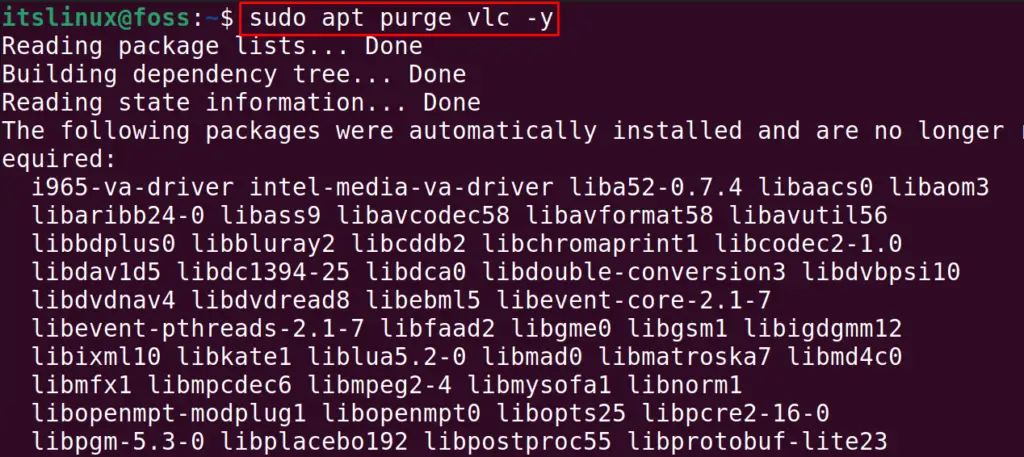

The package to the VLC has been removed, and to make sure all its associated packages and file has been removed, run the command:
$ sudo apt autoremove

The package of the VLC has been deleted with the apt package manager.
Method 2: Using the dpkg Package Manager
The dpkg manages the Debian packages on Debian-based Linux distributions, and to delete the package installed using its Debian file, we can use the dpkg manager by following the general syntax of using the dpkg package manager:
$ sudo dpkg -r [packegename]
For example, the installed package of Visual Studio Code can be deleted using the dpkg package manager:
$ sudo dpkg -r code

The package of the Visual Studio Code has been uninstalled.
Method 3: Using the Snapd Utility
The snapcraft is the Linux store containing hundreds of Linux applications. The applications installed on Ubuntu using the snapd utility can also be uninstalled using the snapd utility, and to uninstall the packages using the snapd utility, follow the general syntax:
$ sudo snap remove [package name]
For example, we will uninstall the “Spotify” package using the snapd utility:
$ sudo snap remove spotify

The package of Spotify has been deleted.
Method 4: Using the flatpak Utility
The flatpak utility manages the packages downloaded from the flathub Linux application store, and the general syntax of using the flatpak utility is:
$ flatpak uninstall flathub [packagelink]
For example, we will uninstall the “Citra” package by using the flatpak utility:
$ flatpak uninstall flathub org.citra_emu.citra
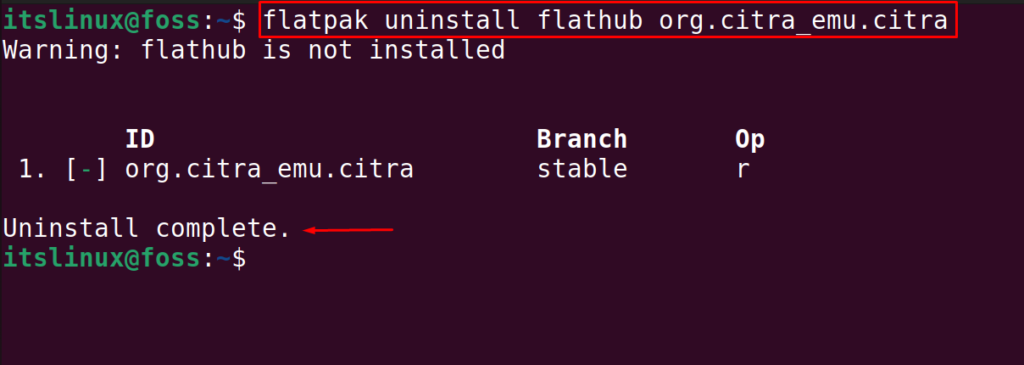
The package has been deleted.
Method 5: Using the Ubuntu Software Center (GUI Method)
This method is known as the GUI method to uninstall the software on Ubuntu. This application can install and uninstall various snap and Ubuntu repository packages.
Step 1: Open Ubuntu Software
Now, search for “ubuntu software” in the application’s menu and launch the searched application:
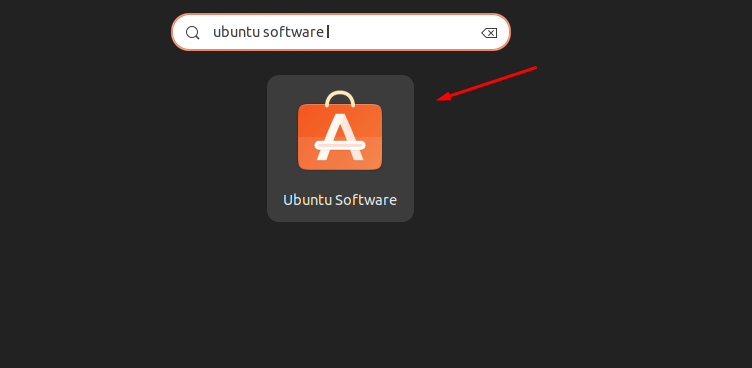
Step 2: Look for the Installed Applications
Then click on “Installed” and look for the application you want to uninstall:
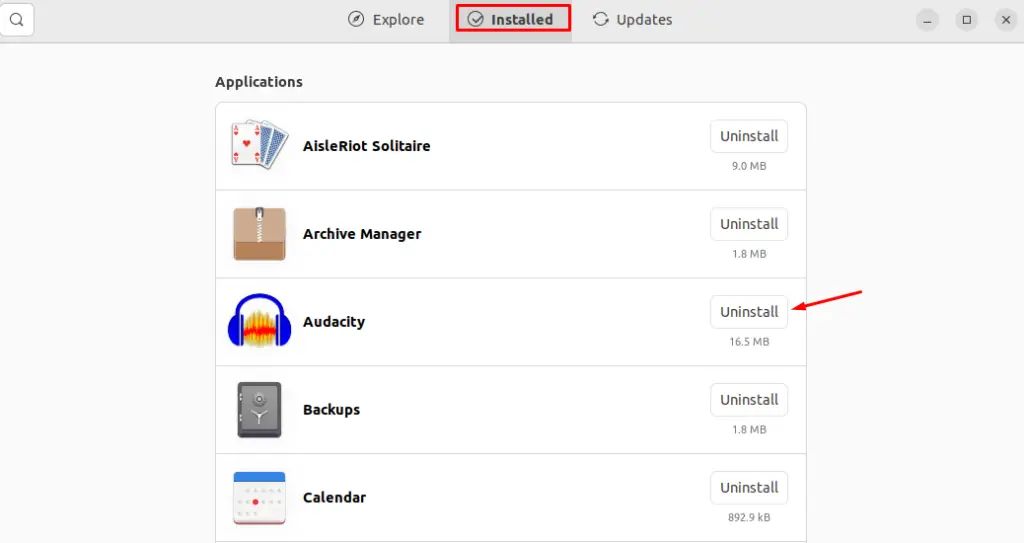
Step 3: Uninstall the Specific Application
For demonstration purposes, we will “Uninstall” the “Audacity” by clicking the “Uninstall”:
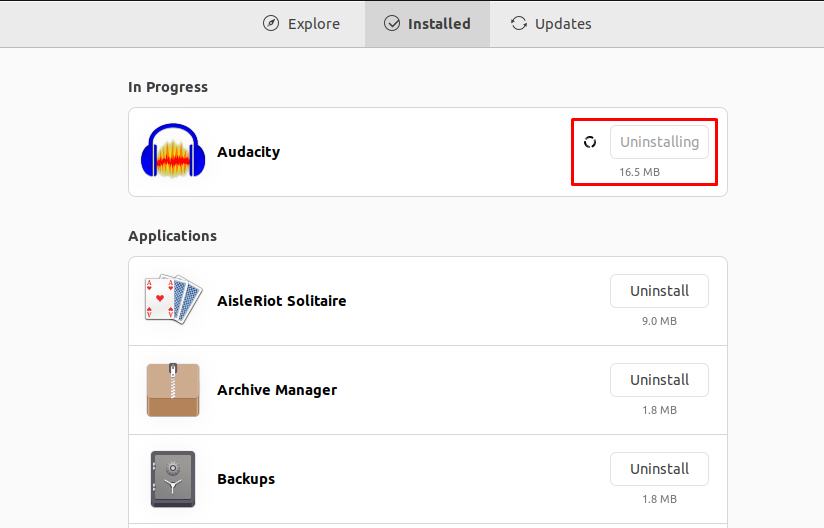
The package will be uninstalled.
That’s all about the 5 ways of uninstalling the software/packages on Ubuntu.
Conclusion
The 5 best ways to uninstall the Software on Ubuntu is by using the utilities, including the apt, dpkg, snap, flatpak, and the Ubuntu Software. By the end of this post, you have learned the best 5 ways to uninstall software on Ubuntu.












